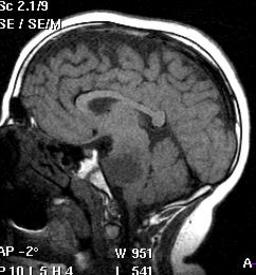
Glioma is a type of brain cancer that affects almost all men and women over the age of fifty. Glioma is a type of tumor that results from the growth of a tumor cell in the body. There are three different types of normal cells that cause tumors when they become abnormal. An astrocyte cell will create astrocytic tumors (including astrocytic glioma), an oligodendroid cell will create oligodendrogliomas, and a neuron cell will create neurons.
Tumors that show a combination of these three different types are often referred to as mixed gliomas. Tumors in mixed glioma often have features of both astrocytic and oligodendroid cells, but in most cases they have both characteristics at the same time. Some gliomas are indeed mixed. Most mixed gliomas have characteristics of both astrocytic and oligodendroid cells.
Besides glioma, there are two other types of gliomas that grow in the brain: tumors from astrocylt cells and tumors from oligodendroid cells. Both of these types of gliomas come from astroblasts, astrocytes, which are cells that make up the inside of our cells, including nerve cells. Neuronal cells are the cells that make up the nervous system.
Two types of glioma cells, astrocytic and oligodendroglial, tend to divide and multiply uncontrollably into multiple tumors. These tumors are known as gliomagen tumors.
Glial tumors are tumors that grow in the brain and are commonly found in the central nervous system
They are also called intraventricular or intrathecal tumors. They develop slowly, although they do not always cause death in people with the condition. There is no specific treatment for glial tumors other than removing them or slowing their growth.
The types of glial cell tumors are the ones that cause the greatest concern. This is because the malignant grip tumors in most people who get these tumors do not grow out of control and can continue to grow without being diagnosed. If left unchecked, these tumors can grow into the brain. Even if they are discovered, the tumors rarely cause death or long-term problems. However, some of these tumors can sometimes be removed surgically.
Some types of glial tumors begin in the central nervous system and grow outward through the blood vessels and then invade the brain and spinal cord. This type of glial cell tumor is known as primary glioma. This type of glia tumor typically invades the spinal column and moves through the cerebrospinal fluid.
Some types of glia cell tumors spread to the brain stem through the abdominal cavity and then into the back of the skull. This is known as secondary glia cell glioma. Secondary glia cell tumors are more likely to grow into the brain stem and spread through the blood vessels in the neck and/or cranial cavity.
Glioma tumors can also be a result of the rare types of glioma known as disseminated and recurrent. Dispersed gliomas are cancers that begin in the subarachnoid area of the brain and then travel throughout the body. Recurrent gliomas, however, are cancers that grow in the brain stem, spinal cord and the brain and spinal cord again and often become larger than the original tumor.
The most common type of cancer found in the brain, which is not involved in glioma, is called the subarachnoid tumor. The subarachnoid tumor is very small and benign (no cancer cells). However, this type of tumor in the brain has the potential to grow large and potentially create an obstruction of blood flow to the brain and cause seizures. Other forms of glioma are the result of glial cell tumors growing in other parts of the body, such as the lungs, liver or kidneys.
Some of the most common types of glioma are extremely aggressive and pose the highest risk for causing death or complications. They include: maxillary sinus tumor, which cause a swollen lump in the eyelid; the median eminence, which is a fluid-filled sac under the upper eye; cervical cancer that grows in the upper neck; bladder and kidney cancer that grow in the bladder; and colon, rectum and peritoneal mesothelioma, which can spread to the abdomen. There is a possibility that these types of cancers may spread to the brain, resulting in the formation of meningioma. If meningioma develops near the brain, it may cause symptoms such as hearing loss or blindness.
One common form of glioma is a form called pleural mesothelioma. This form of glioma grows under the lungs and may cause chest pain and difficulty breathing. and even lung cancer of the pleura, which forms in the cavity between the lungs and the pleura and can cause severe pain.
